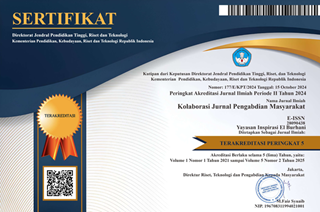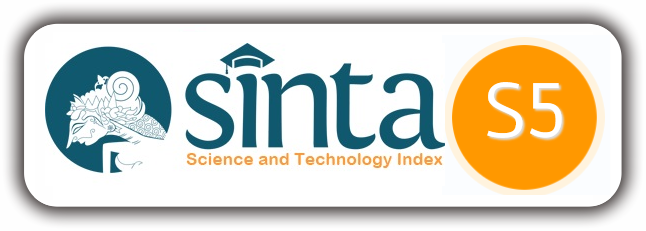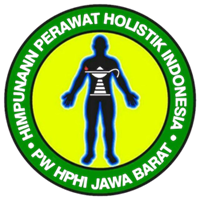Pendampingan Warga Binaan Rehabilitasi Narkoba Kota Banjar dalam Pemanfaatan Tanaman Lokal
DOI:
https://doi.org/10.56359/kolaborasi.v4i4.382Kata Kunci:
honje, environmental conservation, participatory approachAbstrak
This community service program aims to assist drug rehabilitation inmates in utilizing local plants such as Hangasa (Amomum dealbatum), Parahulu (Vatica scortechinii), and Honje (Toona sinensis) for health and environmental conservation. This program was conducted with a participatory approach for 1 week, involving 50 participants who received theoretical and practical training. Quantitative results showed a significant increase in participants' knowledge and skills, with an average increase of more than 28% in all aspects assessed. Qualitative results showed an increase in participants' awareness of the importance of environmental conservation and positive social impacts in the form of working group formation and community empowerment planning. In conclusion, this program was successful in increasing knowledge and skills in supporting environmental conservation. Recommendations for future implementation include developing sustainable support and increasing public education. This holistic approach has the potential to be applied in other locations to support community rehabilitation and development.
Unduhan
Referensi
BNN. (2023). Laporan situasi narkoba di Indonesia 2022. Badan Narkotika Nasional. Retrieved from https://bnn.go.id/situasi-narkoba-2022.
Degenhardt, L., et al. (2018). The global burden of disease attributable to alcohol and drug use in 195 countries and territories, 1990–2016: A systematic analysis for the Global Burden of Disease Study 2016. The Lancet Psychiatry, 5(12), 987-1012. doi:10.1016/S2215-0366(18)30337-7.
Hser, Y. I., et al. (2015). A recovery-oriented care approach for addiction treatment: An introduction to the psychotherapeutic recovery-oriented care model. Journal of Substance Abuse Treatment, 47(1), 1-8. doi:10.1016/j.jsat.2014.12.010.
Setiawan, H., Ariyanto, H., Firdaus, F. A., & Khairunisa, R. N. (2021). Pendidikan Kesehatan Pencegahan Skabies Di Pondok Pesantren Al-Arifin. Martabe : Jurnal Pengabdian Kepada Masyarakat, 4(1), 110. https://doi.org/10.31604/jpm.v4i1.110-117
Setiawan, H., Firdaus, F. A., Ariyanto, H., & Nantia, R. (2020). Pendidikan Kesehatan Perilaku Hidup Bersih dan Sehat di Pondok Pesantren. Madaniya, 1(3), 118–125. Retrieved from https://madaniya.pustaka.my.id/journals/contents
Setiawan, H., Suhanda, S., Rosliati, E., Firmansyah, A., & Fitriani, A. (2018). Promosi Kesehatan Pencegahan Hipertensi Sejak Dini. ABDIMAS: Jurnal Pengabdian Masyarakat, 1(2), 41–45. https://doi.org/10.35568/abdimas.v1i2.328
Kong, L., et al. (2022). Chemical constituents and biological activities of Toona sinensis (A. Juss.) Roem.: A comprehensive review. Food Chemistry, 372, 131199. doi:10.1016/j.foodchem.2021.131199.
Li, X., et al. (2021). Traditional uses, phytochemistry, and pharmacology of Toona sinensis: A comprehensive review. Journal of Ethnopharmacology, 279, 114398. doi:10.1016/j.jep.2021.114398.
Luo, Y., et al. (2022). Phytochemistry and pharmacology of Amomum species: A review. Journal of Ethnopharmacology, 292, 115162. doi:10.1016/j.jep.2022.115162.
Maxted, N., et al. (2010). Agrobiodiversity conservation: Securing the diversity of crop wild relatives and landraces. CABI, Wallingford, UK. doi:10.1079/9781845937003.0000.
Ningthoujam, D. S., et al. (2021). A comprehensive review on the ethnomedicinal uses, phytochemistry, and pharmacology of Amomum dealbatum Roxb. Phytochemistry Reviews, 20(5), 1101-1125. doi:10.1007/s11101-021-09751-8.
Ningthoujam, D. S., et al. (2021). A comprehensive review on the ethnomedicinal uses, phytochemistry, and pharmacology of Amomum dealbatum Roxb. Phytochemistry Reviews, 20(5), 1101-1125. doi:10.1007/s11101-021-09751-8.
Raskin, I., et al. (2002). Plants and human health in the twenty-first century. Trends in Biotechnology, 20(12), 522-531. doi:10.1016/S0167-7799(02)02080-2.
Siti, R dkk. (2024). Preserving cultural heritage exploration: unveiling the therapeutic properties of endangered plants (hangasa, parahulu, honje). Proceeding International Health Conference Vo. 1 No.1 2024. DOI : 10.25157/ihc.v1i1.14868
Siti, R dkk. (2024). Manfaat buah hangasa dalam menurunkan tekanan darah warga binaan pengguna narkoba. Jurnal Keperawatan Galuh Volume 6 Nomor 2 Hal. merupakan Jurnal Nasional. DOI : 10.25157/jkg.v6i2.15436
Wijayanti, H., et al. (2023). Antioxidant and antimicrobial activities of Vatica scortechinii bark extract: A potential source of natural bioactive compounds. Biocatalysis and Agricultural Biotechnology, 51, 102368. doi:10.1016/j.bcab.2023.102368
Unduhan
Diterbitkan
Cara Mengutip
Terbitan
Bagian
Lisensi
Hak Cipta (c) 2024 Siti Rohimah, Reni Hertini, Enik Suhariyanti, Deni NIralam, Indra Permana, Zulfikar Zulfikar

Artikel ini berlisensi Creative Commons Attribution 4.0 International License.












